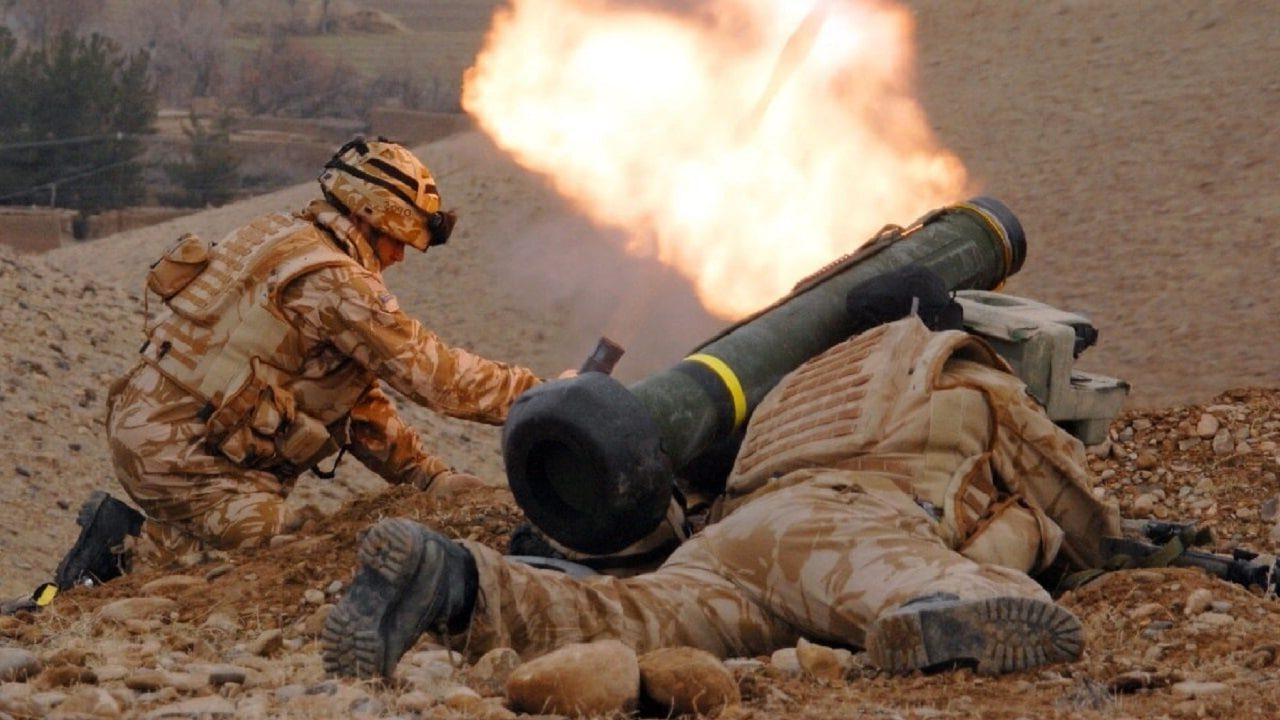Ukraine is burning through ammunition for 155mm howitzers quickly and it is leaving the United States in a bind, according to a new report by think tank CSIS.
(Subscribe to Our YouTube Channel Here. 19FortyFive publishes original videos every day.)
It could take up to five years for the industrial base to produce enough rounds to replenish American stocks.
It is not just cannon shells. Javelin and Stinger missiles could take six to eight years to normalize for the U.S. inventory.
This calls into question whether the Americans could fight another war against an adversary such as China without running out of ammunition.
The Level of Ammunition Provided Is Alarming
The United States has transferred over a million 155mm shells, including precision guided rounds, to Ukraine since the war started almost a year ago.
CSIS rates this as a condition “red” for the United States military, which means it is “unlikely to rebuild inventories within five years.”
Excaliburs, Javelins, and Stingers Will Be Difficult to Replace
Excalibur precision-guided rounds are also on the wane. Ukraine has received 5,200 rounds of these munitions. The United States is sending around 1,000 Excaliburs a month but annual production of the valuable munition is 1,000 rounds a year. It could take up to seven years to replace American stocks for this type of ammunition.
Up to 8,500 Javelin anti-tank missiles have been sent to the battlefield and 1,600 Stinger anti-aircraft missiles have been transferred, according to a chart in the report that was compiled using Pentagon sources and news reports.
The U.S. Military Needs Ammo Too – Even in Peacetime
CSIS pointed out that the U.S. military field artillery soldiers and marines need shells to train and retain proficiency, not to mention the ammunition required if there were a war. The conflict in Ukraine has been an artillery duel since the outset. Russia’s army is sometimes described as an artillery force with tanks. Ukraine also blasts away with U.S. provided M777 towed howitzers that were first sent in April. The defenders have recently been granted the American Paladin 155mm self-propelled howitzer – the jewel of the Army field artillery branch. This system will require more shells.
Ukraine Firing Over 4,000 Artillery Rounds Every Day
The report estimated that Ukraine is firing 143,000 shells a month or close to 4,700 rounds each day. This is unsustainable for the United States. Other militaries among the allied coalition will have to step in at some point to be the sources for artillery rounds. CSIS analyst Mark Cancian wrote that this scenario could become a crisis. Ukraine may have to “ration shells and fire at only the highest priority targets.”
Heavy Fighting Requires Ample Artillery Fire
This condition would be untenable for the Ukrainians as the current heavy fighting in the Donetsk region, especially around the towns of Bakhmut and Soledar, require significant artillery fire since Russian soldiers are advancing in waves.
Does the DoD Have This Under Control?
A spokesman for the Pentagon has somewhat acknowledged the problem but believes that the military is monitoring the problem closely. Air Force Brigadier General Pat Ryder did not seem too concerned about dwindling stocks of ammunition. “We will not go below our readiness requirements as we take into consideration what Ukraine’s security assistance needs are,” Ryder said in a news release transcript.
Maybe South Korea Can Help
One source that could potentially help alleviate the problem is South Korea. The South Korean military has a large artillery force and a productive industrial base that could provide 155mm shells to Ukraine. Ryder said the Pentagon is in discussions with the South Korean government to further assist supply efforts. The United States agreed to buy 100,000 rounds from South Korea in November, but Ukraine will go through these quickly.
Use a Different Size of Round Instead
Another difficult choice would be for Ukraine to use lighter, shorter-range, and less lethal 105mm howitzers and ammunition, but the defenders obviously prefer the harder hitting rounds and the Excalibur GPS-guided projectile.
This Issue Needs Oversight
Lawmakers in Congress may want to hold a hearing on this problem. There are Republicans who are skeptical of the entire premise of assisting Ukraine financially and militarily and this situation will add grist to their mill. Secretary of Defense Lloyd Austin and Chairman of the Joint Chiefs of Staff General Mark Milley may have to field some difficult questions about how the U.S. military can continue to transfer shells and other weapons to Ukraine and whether other countries can pick up the slack.
MORE: Is Donald Trump a ‘Cognitive Mess’?
MORE: Should Joe Biden Really Run in 2024?
MORE: Ron DeSantis May Peak Too Early
Author Expertise and Experience: Serving as 19FortyFive’s Defense and National Security Editor, Dr. Brent M. Eastwood is the author of Humans, Machines, and Data: Future Trends in Warfare. He is an Emerging Threats expert and former U.S. Army Infantry officer. You can follow him on Twitter @BMEastwood. He holds a Ph.D. in Political Science and Foreign Policy/ International Relations.

